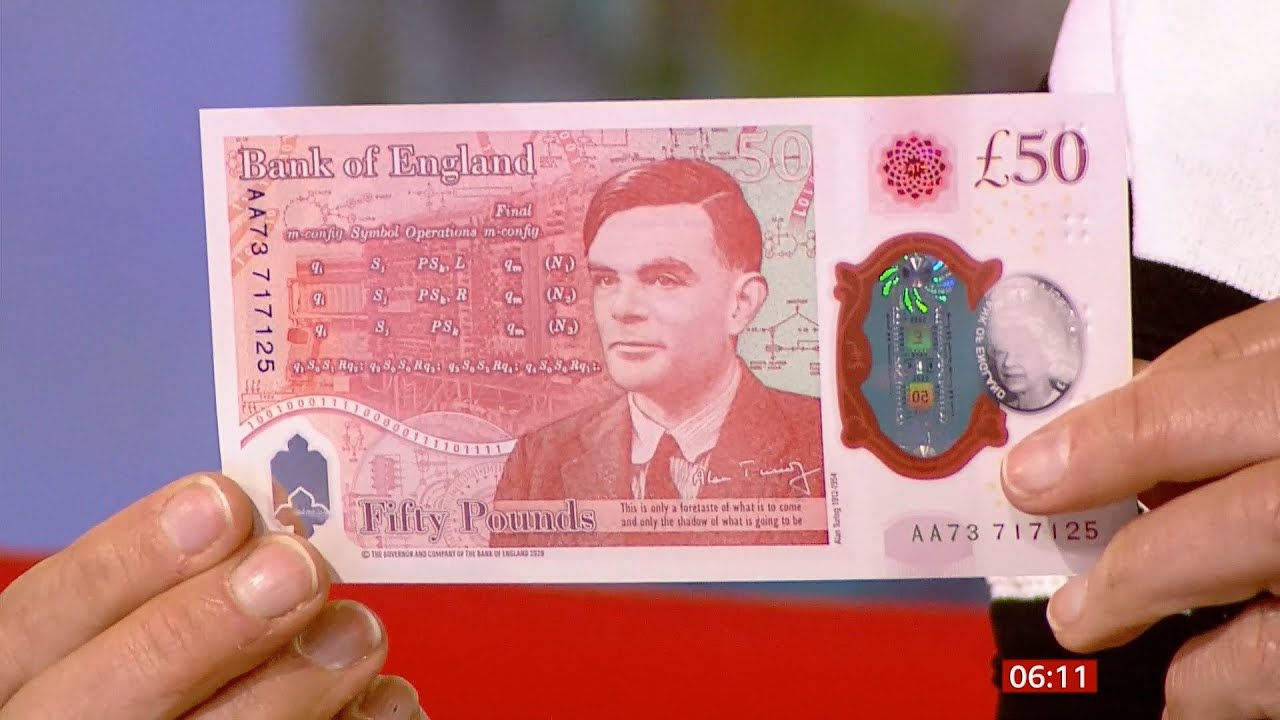The scientist who finished the Nazis: Who is Alan Turing?
Alan Turing, the creator of computer science and artificial intelligence... He was remembered as a mathematical genius ahead of his time and a heroic scientist who ended the war.

He showed what modern computers can do with his only groundbreaking science paper "On computable numbers with an application on the problem of detection." It paved the way for the computers we use today. He was only 24 when he wrote this article.
We more or less know what the computer means and what it can do today. However, if we entered a time machine and went back eighty years, and we called the first person that we came across a "computer", we would have thought of a "person who does calculations". Because the computers of that period were people who made calculations at a desk and turned these calculations into books in tables. And many people, from scientists to bankers, were working using these account books they prepared. Maybe that's where the word account book came from.
Alan Mathison Turing (23 June 1912 – 7 June 1954) was a British mathematician, computer scientist, logician, cryptanalyst, philosopher, and theoretical biologist. Turing was highly influential in the development of theoretical computer science, providing a formalisation of the concepts of algorithm and computation with the Turing machine, which can be considered a model of a general-purpose computer. He is widely considered to be the father of theoretical computer science and artificial intelligence.
However, a polymath named Charles Babbage (a versatile scholar-scientist) would argue against this situation by saying that the tables in question were full of errors and would design a machine so that people could perform their calculations without making mistakes.
He called this invention the "Difference Machine". This was not enough for Babbage, who also produced the prototype of this machine in 1837. Because this machine could only add. He wanted to develop a machine that could do all kinds of calculations and actually succeeded in theory. This device, which he called the "Analytical Machine", would have basic computing features, including the main processor and memory. Until his death in 1871, he tried to produce this machine - expected to be the size of a locomotive - but he would not be successful.
The birth of the modern computer: the Turing machine
The leaves of history had to be shed before a programmable computer could be produced. Until Alan Turing! Turing would pave the way for the computers we use today with his 1936 paper "On computable numbers with an application to the Entscheidungsproblem," a groundbreaking article showing what modern computers can do. He was only 24 when he wrote this article.
The concept of the Entscheidungsproblem was coined by German mathematician David Hilbert in 1928, asking whether there could be an algorithm that could decide whether a mathematical proposition is true or false. The solution to this problem, called the decision problem, meant that computing technologies were real (like a human), in other words, a machine could do all the computation.
Then Turing dreamed of a machine that could solve all the problems of mathematics. If mathematics was a decidable science, it was a machine that could read symbols printed on an endless strip of paper to solve a rule-based mathematical problem: delete the symbol or write a new symbol; move the strip one space left or right or stop. It was a device that could be programmed to perform functions by determining rules within the strip itself: the Turing Machine!
When we take the Turing Machine as the starting point, the answer to the question of who is the founder of modern computer science is Alan Turing. Because it was he who formed the theoretical foundation of the functional machine, which forms the model for a computer in today's sense. However, Turing gave importance to practice as well as theoretical studies.
Turing is the "founder of modern computer science" as well as "2nd World War II". We can also say “the scientist who changed the course of World War II”. Turing, who deciphered the cryptic messages of the Nazis, which almost everyone said "unsolvable" during the war, with an information processing technology (Bombe) he developed after feverish work, would also ensure that the war would come to an end in a shorter time.
The genius who can solve advanced math problems without learning calculus
Now let's go back a bit and look at how the Alan Turing legend began. His family had returned to London for Alan's birth on June 23, 1912, when his father was a government official in India. Sent to Sherborne School, a conservative school in Dorset (South England) at the age of 14, Alan was still a science enthusiast and had a genius of his own.
Young Alan was pondering and solving advanced math problems without learning Calculus. Even at that age, he could grasp the work of Albert Einstein. Although this genius was noticed by his teachers, he was in a conservative school and needed a ramp to flourish. It was during this period that a dramatic event took place. He lost a close friend during his last term at Sherborne. He became an atheist after getting rid of all his religious beliefs.
